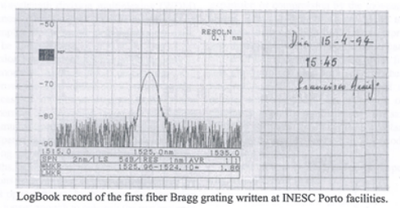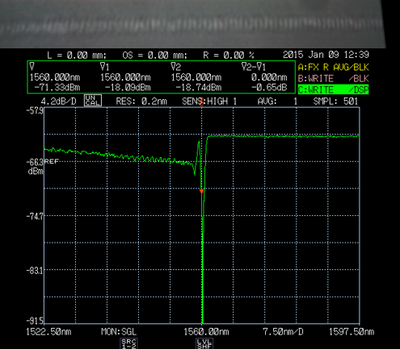INESC TEC researchers develop Bragg network using innovative methods
Now that 20 years have passed since Francisco Araújo, researcher at INESC TEC’s Centre for Applied Photonics (CAP), developed the first Bragg network in April 1994 (see Figure 1), the CAP researchers Paulo Marques (coordinator) and Daniel Alexandre fabricated the first Bragg network using a femtosecond laser (impulses lasting 200x10-15s, that is, one millionth of one billionth of a second), purchased recently as part of the BEST CASE (Figure 2) project.
These periodic structures (periods of about 500 nanometres) fabricated in the core of the optical fibres make it possible to reflect a narrow wavelength range (typically below 1nm), and are at the basis of different types of sensors developed at CAP. These structures have led to the launching of the spin-off HBM Fibersensing. This laser is also useful to fabricate Bragg networks.
Also in CAP, Ricardo André, student of the MAP-FIS doctoral programme in Physics, has managed to fabricate for the first time a Type III Bragg network using a FIB - Focus Ion Beam (see Figure 3). These sub-micrometric sensors can only be written in the core by micromachining. These sensors, with very particular features, can help develop new solutions for extreme environments and biomedical applications.

Figure 1 – Image of the spectrum of the first grating fabricated using phase mask and ultraviolet laser in 1994

Figure 2 – First grating fabricated in a single mode standard optical fibre using a femtosecond laser

Figure 3 – Type III grating fabricated with ion beam (partnership with IPHT Jena)
The INESC TEC researchers mentioned in this article are associated with the following partner institutions: FCUP and INESC Porto.


